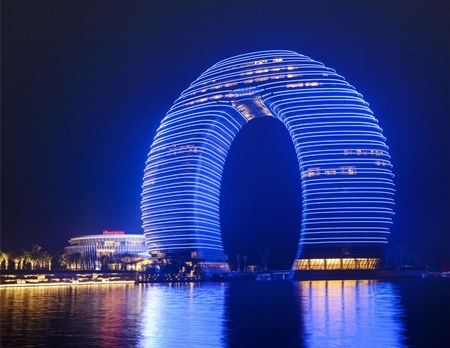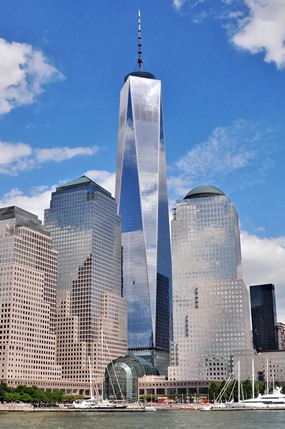All over the world, we are seeing gigantic high-rise projects coming into existence that try to outdo each other in height. It is not just in terms of their physical dimensions, however, that skyscrapers are constantly setting new records – the costs of the buildings, too, are continuously reaching new and dizzying heights. The smartest designs and most sustainable concepts; luxurious and fancy features; the latest materials, technologies and systems – all this consumes astronomical sums in some cases. Emporis (www.emporis.com), the international provider of building data, has now compiled a list of the world’s ten most expensive skyscrapers.
By some distance, the world’s most expensive skyscraper is currently One World Trade Center in New York City, which stands immediately beside the memorial for the Twin Towers, destroyed on September 11, 2001. Costing 3.9 billion U.S. dollars, the building was designed to meet the latest safety standards and offers visitors a breathtaking view over Manhattan from an observation platform on the 100th floor.
 Sheraton’s Huzhou Hot Spring Resort in China. (Photo/Starwood hotels)
Sheraton’s Huzhou Hot Spring Resort in China. (Photo/Starwood hotels)
While the first-placed skyscraper towers unchallenged above all the others, it is a head-to-head race for second place between The Palazzo, the extravagant luxury hotel in Las Vegas, and the winner of the Emporis Skyscraper Award for 2013, London’s The Shard, each of which cost 1.9 billion dollars.
Fourth place is taken by Taipei 101 in Taiwan. The unusual design of the 1.76-billion-dollar office tower is based on the number eight, the Chinese lucky number, and was built entirely according to Feng Shui principles.
The construction of Burj Khalifa in Dubai was – surprisingly – not even half as expensive as the leader, One World Trade Center. Although this record-breaking project holds the title of the world’s tallest building, Burj Khalifa only makes it into fifth place among the most expensive skyscrapers.
Equally costly, but comparatively small in size, is the Sheraton Huzhou Hot Spring Resort in China. Its unique ring shape, which gives the luxury hotel the appearance of an outsize donut, presented a particular challenge to the architects and structural engineers, and catapulted it into equal fifth place in the list of the world’s most expensive skyscrapers.
CapitaGreen, in seventh place, is especially notable for the greenery covering its facade and an imposing “sky forest” on its roof, which provides the offices in the 1.4-billion-dollar project with additional fresh air.
The tenth-placed, one-billion-dollar Chifley Tower, on the other hand, has a giant hydraulic pendulum inside that ensures that the over 20-year-old building does not end up swaying too heavily.
The reasons for the immense costs of skyscrapers are varied in nature. With some buildings, it is known even at the planning stage that they will be cost-intensive, for instance in order to meet the latest environmental standards. Other projects, by contrast, become increasingly costly during construction itself due to unforeseen events or delays. The Elbphilharmonie in Hamburg unquestionably belongs in this latter category; the cost of the mixed-use concert hall, whose completion is now projected for 2016, runs to a billion dollars so far, earning it, even now, eighth place in the list of the world’s most expensive skyscrapers.
(Source: Emporis.com)
 One World Trade Center is shown from the Hudson River in New York. (Joe Mabel/Wikipedia commons)
One World Trade Center is shown from the Hudson River in New York. (Joe Mabel/Wikipedia commons)




